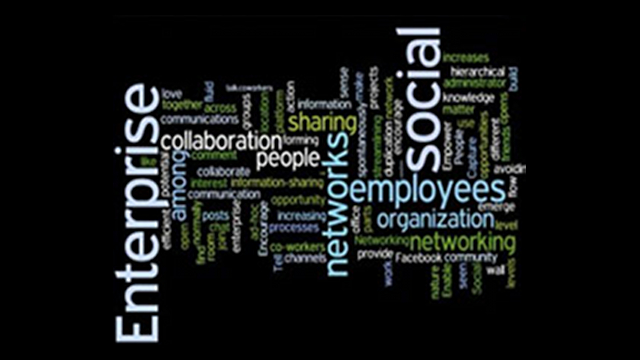(Image Courtesy cio.com)
Scenario 1 – 9.00 am, Mumbai
I rush to find a place in the elevator to reach my office on the 11th floor. The elevator is full & it’s a 2-3 min ride. Nobody greets anybody & there is awkward dead air. The 2 mins often feel like 20 & I am sure most of you can resonate with that feeling.
Scenario 2 – 8.30 am, London
It’s the elevator scene again but I am visiting our HQ in London. I rush in to get to the 8th floor. It’s not as crowded but in the 2 min journey, I have been greeted twice, asked where I am from, teased about the weather in London vs. Mumbai. Before I blink, I have reached my destination.
If I were to ask you, which of the above was a less ‘social’ experience, the answer will be obvious. If you deep dive into why the former is a less social experience, a range of indicators from culture, values, people, ecosystem, societal norms etc. will come up for discussion. At the risk of oversimplification, we are not comfortable initiating & engaging in conversations with strangers. It’s not something that we have grown up with.
It’s important to keep the above context in mind while launching any social initiative within the enterprise. At the heart of a social platform is the need to engage in meaningful conversations with people you may know but often with people you don’t know.
In the spirit of fostering ‘collaboration’ we launched an ESN (enterprise social network) last year. This is nothing new as this Deloitte report predicts that by the end of 2013 more than 90 percent of Fortune 500 companies will have partially or fully implemented an Enterprise Social Network (ESN).
This blog is my attempt to reflect on the lessons learnt during our rollout campaign. My hope is that you can replicate some of our success while avoiding making the same mistakes:
ESN adoption Tip 1: Substantial effort is required to increase awareness. It’s not a sideline activity so decide early who’s front-ending it.
We got the platform in early 2012 but most employees did not even know that an internal social network existed till the start of 2013. It was not a part of any individual / functions charter to spread awareness. In early 2013, we changed this & made the learning function, the collaboration champion with a mandate to evangelize the enterprise network.
ESN adoption Tip 2: Social doesn’t substitute email; it’s intended to provide capabilities that email can’t. Breaking silos is one of them
We centered our initial pitch on ease of communication which was a mistake. It’s tempting to play the communication card early when launching an awareness campaign for enterprise networks. You must keep in mind that overdoing it puts the employee in a spot to choose between email or ESN for communication. Given their comfort with e-mails, it will always take priority leaving you to wonder why employees don’t embrace ESN.
ESN adoption Tip 3: The 80/20 rule applies here as well. Adoption is 80% behavior + culture + values & 20% technology
Social is a behavior & needs to be built. The figuring out (technology) is the easy part & most employees figure it out. Focus your awareness campaign on communicating values rather than the mechanics of how to use the network. We did this by linking the use of internal social network with a core value of ours – Collaboration.
ESN adoption Tip 4: The enterprise social network will not solve world hunger. Target one or two areas. Learning & Employee engagement are good places to start
It’s easy to get carried away & position the social platform as a solution to all problems. Focus on areas which were always social & use the platform to accelerate some of the projects that you may be running.
ESN adoption Tip 5: Building use-cases works much better than just plain talk
The proof is always in the eating. So after you have targeted your launch areas, build some use cases that can show benefit realisation to the leadership. Nothing will get them to endorse this better than real time business results. We used the enterprise social network for learning & development. Here’s a use case that you can review. Enterprise network for learning.
ESN adoption Tip 6: Employees adapt at their pace; not yours. Training has to be built in for those who need it
It’s a good idea to arrange some sort of orientation session for the employees. We included a 45 min session on how to leverage the enterprise network as part of our induction module. In addition, we conducted awareness & roll-out sessions on an on-going basis.
ESN adoption Tip 7: It’s not your HRMS portal where employees apply for leaves. So don’t be surprised if no-one goes there. Stay the course
We made the mistake of expecting too much too soon often leading to disappointments. It’s important to treat this as a campaign. It will take six months to a year for everybody to embrace the internal social network & for the organisation to really start realising the business benefits.
ESN adoption Tip 8: Get your CEO to share on the internal network
We did this pretty late in the game only to realise that this is amongst the first few launch activities that we should have targeted. Ask your CEO to share updates, exchange ideas and comment on posts put up by employees. Nothing accelerates adoption faster than that. The rule of “You get what you ask” applies here. Don’t assume that the leadership will start using the network on their own. Ask them to use it & even better, tell them exactly how you want them to use it during the initial roll-out phase.
ESN adoption Tip 9: Keep it stupid
Yes, stupid is simple. Ensure that the ESN positioning reaches the lowest common denominator. Avoid using big words like knowledge management, communities of practice etc. during the initial roll-out phase. Let employees embrace the platform & then you can say whatever you want.
ESN adoption Tip 10: Enterprise collaboration is not the future; it’s the ‘Now’. Future will be more exciting.
Calling enterprise collaboration the ‘future of work’ is almost a soft way of procrastinating. If you position this is as the future of work, employees will adopt but in the future as there is no pressing need ‘now’. A good ‘call to action’ is to highlight the benefits they can derive in the work today rather than paint a picture of what’s to come.
In Summary
It’s a no-brainer that enterprise social networks can be a big lever in improving employee engagement, internal communication, learning, productivity, sales effectiveness etc.
Employees will come to the enterprise social network for meaningful conversations. They will also come for meaningful people. You have to ensure that both are available.
Are you using an ESN in your organization? Do share your roll-out experience. If you are not using an enterprise social network yet, consider this list of top 10 enterprise tools.
 Sunder Ramachandran is a highly energetic training leader with extensive experience in building capabilities for large teams in the offshore/outsourcing space. He is currently a Senior Training Manager with JLT Group, one of the world’s largest providers of insurance and employee benefits related advice, brokerage and associated services including an office of over 850 employees in Mumbai, India.
Sunder Ramachandran is a highly energetic training leader with extensive experience in building capabilities for large teams in the offshore/outsourcing space. He is currently a Senior Training Manager with JLT Group, one of the world’s largest providers of insurance and employee benefits related advice, brokerage and associated services including an office of over 850 employees in Mumbai, India.
Sunder’s articles on workplace learning have appeared in Indian & International media including The Economic Times, Hindu Business Line, Times Ascent, National HRD Newsletter, Rediff.com, Askmen.com, Top7business.com, Human Capital and HrmAsia.com. His articles can be read at http://www.scoop.it/t/learning-leader. He is passionate about social learning and blogs on the learning experiments that he is leading at http://sundertrg.tumblr.com
Sunder was a training entrepreneur for five years and has gained valuable experience on both the ‘Buy’ & ‘Sell’ side of the training business.. Connect with him on LinkedIn and on twitter @sundertrg.




0 Comments
You can be the first one to leave a comment.